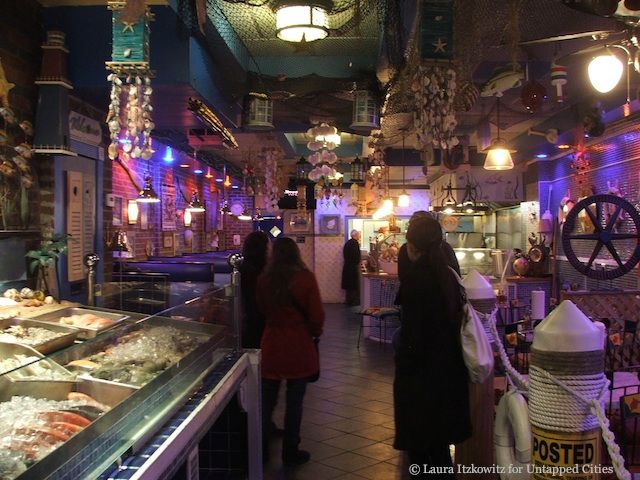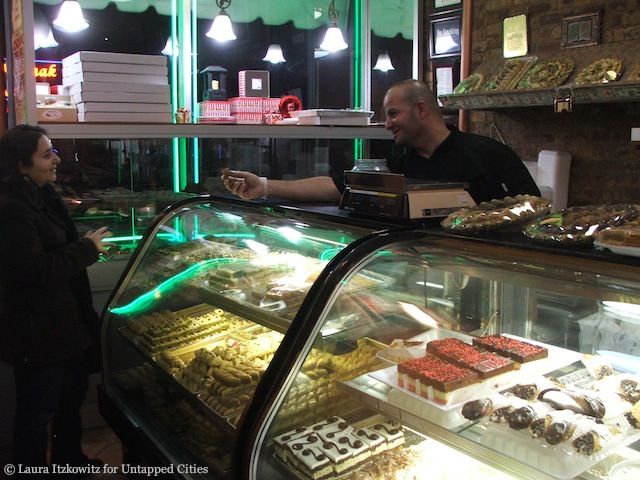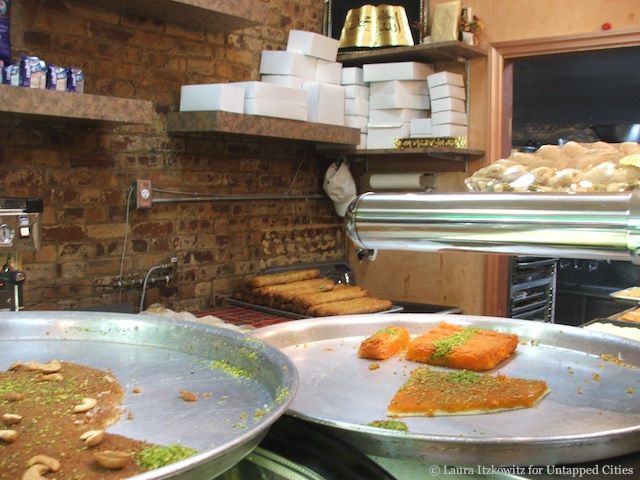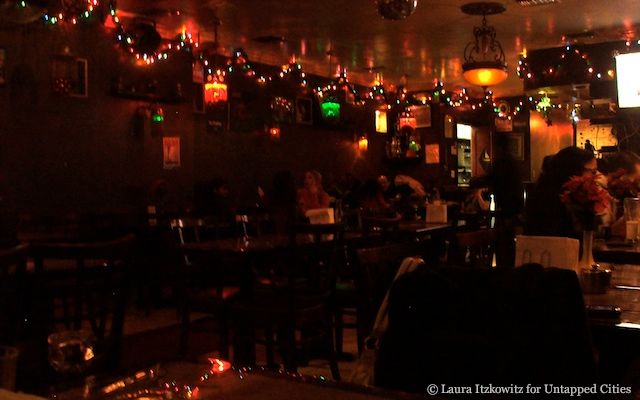Last Chance to Catch NYC's Holiday Notalgia Train
We met the voices of the NYC subway on our nostalgia ride this weekend!


Just minutes off the Triborough Bridge, there’s a section of Astoria that’s difficult to classify. Though the neighborhood is called Little Egypt, Arab-Americans have come from all over the Middle East to live and operate shops and restaurants with their own regional products and specialties. Steinway Street between Astoria Boulevard and 30th Avenue is populated by Egyptians, Jordanians, Palestinians, Lebanese, and many others. For this culinary tour of Arab Astoria, I asked some friends who have lived in Jordan and Palestine to share their favorite places and suggest some of their favorite regional dishes.

Candace Lukasik, a Master of Arts student in Middle Eastern Studies at Columbia University, led us to Alexandria Seafood Market (25-47 Steinway Street), where you can choose from the offerings of fish and seafood displayed on ice and have them cooked to order just like in the port city of Alexandria, Egypt. We weren’t ready for a full meal yet, but as soon as we walked in, the host insisted we sit down for a pot of mint tea and brought over a big plate of cakes and pastries.

And if that wasn’t enough, he led us to Al-Sham Sweets & Pastries (24-39 Steinway Street) down the street and introduced us to his friend from the city of Nablus in the West Bank, which is famous throughout the Middle East for their delicious desserts. In addition to the baklava and other assorted bite-sized pastries made with phyllo dough, try the honey balls (pictured below). They’re crispy on the outside and burst open with honey when you bite into them.

If you’re looking to try something a bit more unusual, ask for a piece of the kanafa. Made with a layer of homemade cheese with sugary syrup and a crunchy layer of dried noodles and pistachios or walnuts, it originates in Nablus, where people sometimes eat it for breakfast. Basma Guthrie, a Master of Arts student in Arab Studies at Georgetown, explained that there are different types of kanafa, one soft and one a bit more crunchy. She told me that Nablus people often eat sweets for breakfast.

After being stuffed with sweets, we decided to go to El-Rawsheh Café (25-48 Steinway Street) for something more savory. This unassuming little restaurant is a Lebanese/Egyptian mix, serving up traditional specialties like shawarma, falafel, hummus, babaganoush, stuffed grape leaves and more. The food was simple, delicious and very filling. The vegetarian platter is enough for two or three people to share, and a great deal at only $12.

Finally, we headed over to Jerusalem Nights (25-42 Steinway Street) to soak up the atmosphere and smoke some shisha. Heba Arafa, an Arabic professor at Mount Holyoke College, suggested the mint shisha, but there are over a dozen flavors to choose from, including watermelon and passion fruit. Jerusalem Nights is owned by Egyptians, but it was originally opened by Palestinians. Heba pointed to a landscape on the wall and explained that her family in East Jerusalem has the same painting. Everywhere we went, people asked us where we were from and overwhelmed us with their hospitality.

The beauty of these restaurants, bakeries and cafés is that they’re not gimmicky commercialized versions of Arab food and culture. They’re owned and operated by people who may have suffered hardships in the Middle East, but who want to transfer elements of their culture to this new context and generously share it with others. When in doubt, ask a waiter for a recommendation and you might be lucky enough to get his life story.
Alexandria Seafood Market [map]
25-47 Steinway Street
Astoria, NY 11103
Al-Sham Sweets & Pastries [map]
25-39 Steinway Street
Astoria, NY 11103
El-Rawsheh Café [map]
25-48 Steinway Street
Astoria, NY 11103
Jerusalem Nights [map]
25-42 Steinway Street
Astoria, NY 11103
Follow Untapped Cities on Twitter and Facebook! Get in touch with the author @lauraitzkowitz.
Subscribe to our newsletter